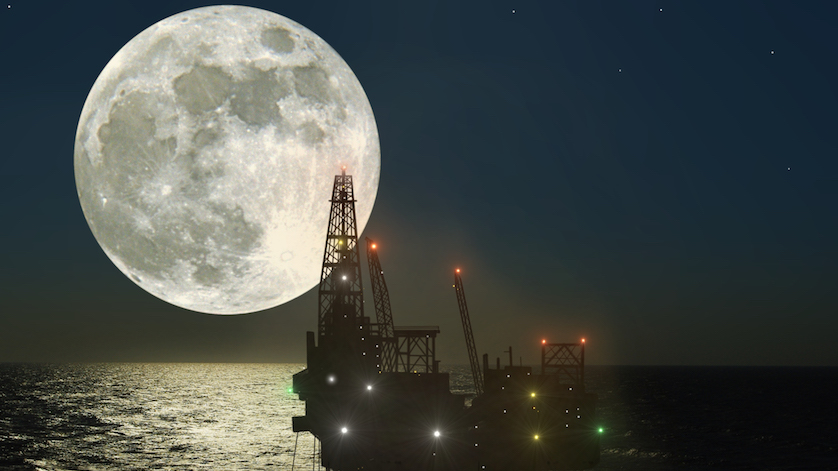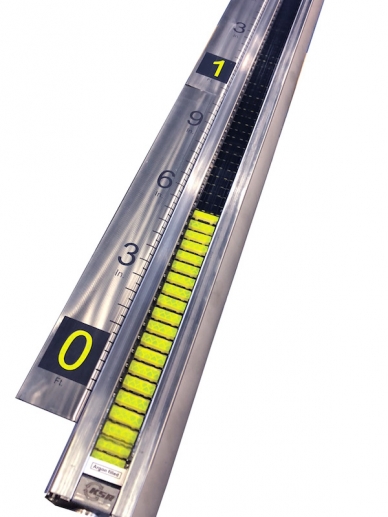
WIKA is a global company with decades of instrumentation experience, including a deep understanding of alloys and different manufacturers’ trade names for them. That’s why EPC companies from around the world partner with WIKA on offshore and seaside engineering projects that require corrosion-resistant magnetic level indicators and other level instruments.
To build an offshore platform or seaside processing plant today, you need the services of engineering companies, construction firms, and suppliers from around the world – not to mention a variety of rugged materials and instrumentation. The various components – ranging from fiberglass-reinforced thermoplastic pressure gauges to exotic alloys for a magnetic level indicator – must be able to withstand the corrosive nature of seawater, salt air, and harsh media. Adding to the complexity is that each supplier may work with materials that go by different names in different regions.
Global Projects Require a Global Instrument Manufacturer
Take exotic alloys as a case in point. Suppliers will often drive particular trade names into specification requirements. However, in a global economy, sourcing by trade-name alloys can be tricky. Let’s say the EPC (engineering, procurement, and construction) company is based in the UK, the platform will be built in Houston, and the end destination is Asia. The problem with material sourcing is that the UK firm is basing construction on a Europe-specific trade-named alloy with an EN number (European Standard number), which means the alloy would have another name in the United States. If the instrument manufacturer is not aware of the exotic alloy’s various trade names in different markets, confusion could set in and weeks may pass before the issue is cleared up. And as all parties know too well, delays are as costly as they are frustrating.
Because WIKA is a global manufacturer, our specialists understand and work with these challenges daily. Our instrumentation experts are able to recommend engineering best practices and help all stakeholders come to mutual understanding in today’s global economy
What’s in a Name?
Let’s start with one of the most common offshore alloys, duplex stainless steel, which gets its name from the combination of two types of steel: ferritic and austenitic. One of the frequently used alloys in this group is UNSS32305/S31803, which goes by the trade name of 2205. Although this alloy is commonly specified for piping and construction, it is not recommended for a magnetic level indicator (MLI). Why? The problem lies with its ferritic chemical composition. The float magnet of the level gauge would be attracted to the inner pipe wall, causing hang-ups and inaccurate readings. For this reason, WIKA recommends using super-austenitic steel – which is amagnetic and contains at least 6% molybdenum for excellent corrosion resistance – rather than duplex stainless steel for instruments exposed to demanding offshore environments.
However, super-austenitic stainless steels go by several trade names. Here are some of the most common ones:
- AL-6XN®
- INCOLOY® Alloy 25-6HN
- 254 SMO™
- 6 moly
- 6Mo
- Alloy 6 Mo
Application data sheets will often contain one or more of these trade names, and an EPC company could run into several obstacles when locally sourcing super-austenitic stainless steel due to availability and approved vendor lists. WIKA recommends that EPCs reference EN or North America’s UNS (Unified Numbering System) numbers rather than trade names, as using standardized numbers allows for more flexibility and healthy competition.
In the case of super-austenitic stainless steel, the reference numbers are:
- UNS N08367
- UNS S31254
- EN number: 1.4547
WIKA’s Custom Solutions for Magnetic Level Indicator

Magnetic display for bypass level indicators, model BMD
Now that we see the need for an MLI made of the right corrosion-resistant material, there’s the matter of the level instrument itself. WIKA offers various combinations of indicators based on atmospheric conditions, process temperature, cost, and customer specifications. In some cases, the WIKA BMD series of bypass level indicatorscan even be retrofitted to competitors’ units for increased visibility or changes in service environment.
For offshore operations, WIKA recommends a magnetic level indicator comprising a stainless steel rail, stainless steel scale, hermetically sealed tube, and stainless steel flag assembly. The instrument can also be customized with reflective flags and scale for increased distance viewing.
However, not all offshore applications require this extent of an indicator design. For instance, if the MLI will be located internally on a vessel or is heavily insulated, a less expensive yet equally effective option would be a standard aluminum rail with stainless steel flags and scale.
Multinational projects can be challenging, but instrumentation doesn’t have to be. Contact WIKA USA for more information about trade names, magnetic level indicators and level measurement in general.


I appreciate the insights you provided in your blog. Thank you for sharing this valuable information.